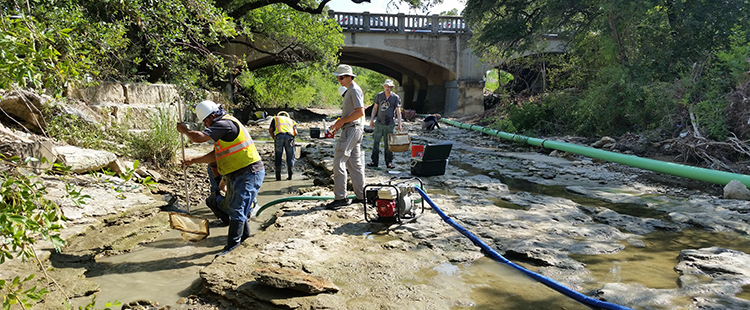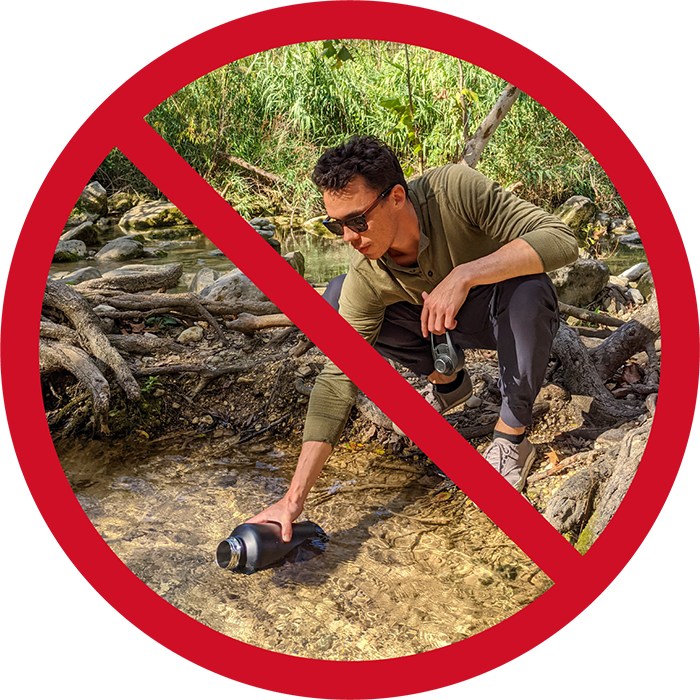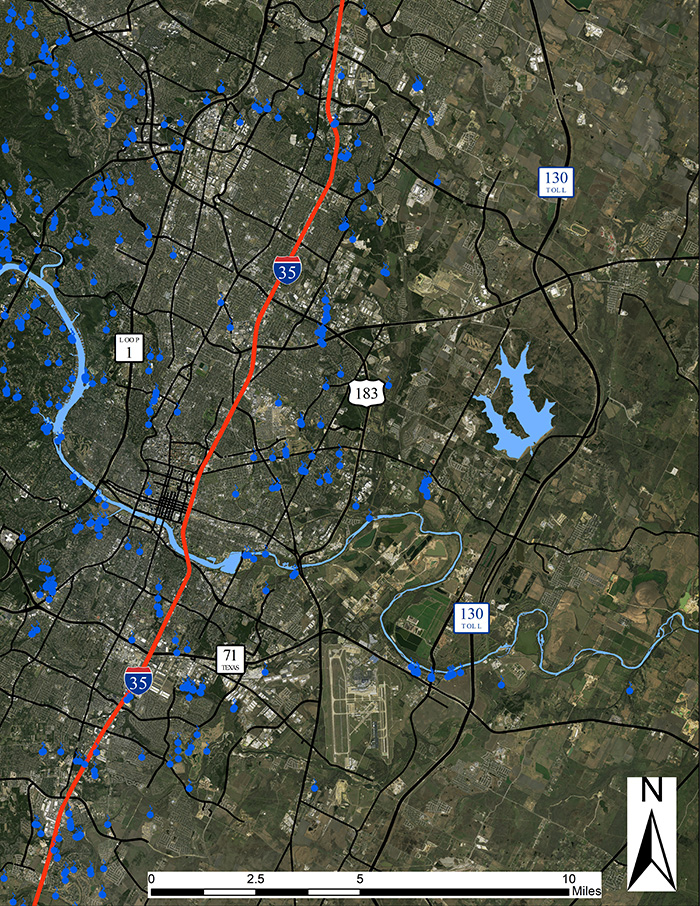You may have heard the term “rain garden”, but many people don’t know what a rain garden looks like or how they can help restore our creeks. Basically, a rain garden is a shallow depression in the ground that collects water during a rain storm. The water that collects in rain gardens soaks into the soil and eventually makes its way to our rivers and streams as “base flow”. Without rain gardens the water from a storm would flow off impervious surfaces like roofs, driveways, streets and parking lots directly into the creek all at once. This can be very bad news for our streams, because that big slug of dirty stormwater causes…

Crews lower water levels in Shoal Creek before starting a construction project.
Our environmental scientists greatly value the wildlife in Austin’s creeks and work hard to save fish and other aquatic inhabitants when creeks are impacted. Sometimes the City’s own projects are the source of the disturbance. For example, construction projects to stabilize creek banks or repair infrastructure require temporarily draining the water from…

Have you heard that drinking untreated (or “raw") water from Austin's springs is good for your health? Unfortunately, it's not! Drinking water from springs, especially in urban areas, can make you sick.
The water in underground aquifers refi…
You’re probably familiar with Barton Springs Pool in Zilker Park, a popular destination for swimming, relaxing, and cooling off on a hot summer day. And, you might be familiar with some of the other west Austin springs that are scenic destinations to visit on foot or by boat. But, did you know there are HUNDREDS of other springs in our city, many of which are located in east Austin?

Map of Austin S…
Bull Creek District Park, the anchor for the Upper and Lower Bull Creek Greenbelts, is one of Austin’s most popular parks. Beloved for its beautiful limestone outcroppings, springs, and cascading creek, this 47-acre park offers numerous recreational opportunities, including hiking.
To help enhance a visit to this park, we’d like to point out a few of the special environmental features that you might see. This includes some Critical Environmental Features (CEFs), such as springs and cliffs, which are protected from development by the City’s Land Development Code.
Please note that dogs are welcome at the park, but must stay on-leash.
Let’s explore the park!
…